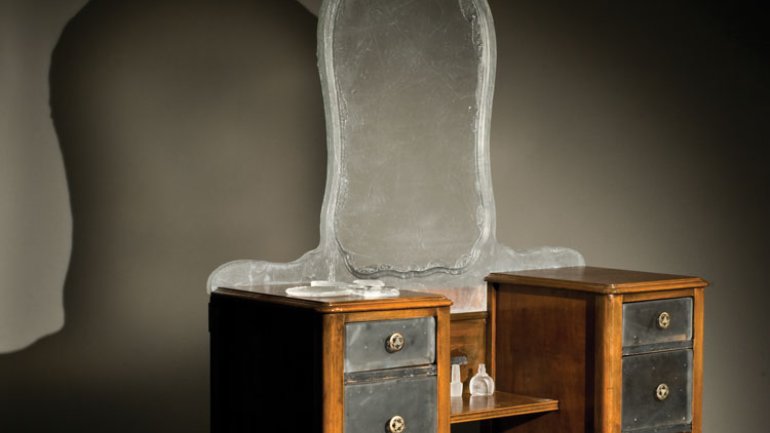Making Our Selves At Home
Making Our Selves At Home
Beyond Useful & Beautiful: Rethinking Domestic Craft
Houston Center for Contemporary Craft
Houston, Texas
October 1, 2011 – January 8, 2012
"Beyond Useful & Beautiful: Rethinking Domestic Craft" derives its name from the William Morris mantra: "Have nothing in your houses that you do not know to be useful or believe to be beautiful." But the title is something of a misnomer. Rather, this group exhibition of largely emerging artists seeks to explore gender in a delightful and refreshing way, closer in spirit to latter-day post-feminist forays into craft, such as Liza Lou's beaded kitchen or Elaine Reichek's subversive embroidered samplers.
For much of the 20th century, femininity and domesticity have reigned as compelling subject matter for artists. Judy Chicago and her Los Angeles-based Feminist Art Program students created the collaborative installation Womanhouse in 1972. That work was inspired at least in part by Louise Bourgeois' Femme Maison series of drawings of the late 1940s. In the 1990s, artists as diverse as Polly Apfelbaum, Mike Kelley, and Rosemarie Trockel employed textiles in all forms - found, machine-knitted, crocheted, and stretched - to comment on the entwined politics of gender and hand labor.
A generation later, in 2011, a new crop of craft-based artists continues its enchantment with emotionally charged, highly gendered objects. Jan Harrell feminizes so-called male tools, such as agricultural clippers, by enameling their handles with decorative copper surfaces. Aaron McIntosh explores the longing of adolescent same-sex desire through erotic appliqué quilts sized for twin beds. His Bedroom Buddies (2010) interweaves strategically placed repeating patterns with vintage beefcake imagery.
Some of the strongest works in the show are more straightforward, such as Shannon Brunskill's ghostly chair, A Place to Rest (2011), and Vanity (2010), a found object in which the usual looking glass is replaced by an opaque mirror of cast glass. The artist's skill in creating an impenetrable, nearly aloof surface is similar to that of British sculptor Rachel Whiteread, known for casting (in a variety of materials) mattresses, the interiors of abandoned buildings, and other objects imbued with memory and a sense of loss. Brunskill's resultant object becomes a vanitas of sorts, a work of seeming "emptiness," trading in notions of transience and fragility.
Other depictions of symbolic loss include the abandoned needlepoints that Mary Smull completes in white yarn, and Lauren Mayer's Between What I Say and What I Keep Silent (2009) - folded porcelain clothing, packed mournfully onto shelving.
An equally strong current in curator Anna Walker's exhibition is the loving attention paid to the history of American material culture, in particular Darryl Lauster's 18th-century everyday tableware, doctored with digital decals that revise historical narratives of religion and gender, and BA Harrington's Puritan-era dowry chest Lineage (2009), in which the carvings are re-embroidered to highlight the object's aspirational femininity. The artistic research and its careful considerations of heritage and ownership are especially commendable, a utopian rendering that re-imagines a more equitable past.
While the kitchen and bedroom may still be the primary triggers for the artists gathered here, the greatest strength of "Beyond Useful & Beautiful" is that it is fully vested in craft as an opportunity to make a point; utilitarianism has been balled up and stuffed at the back of a well-made drawer.
Jenni Sorkin is assistant professor of contemporary art history and critical studies at the School of Art, University of Houston.

